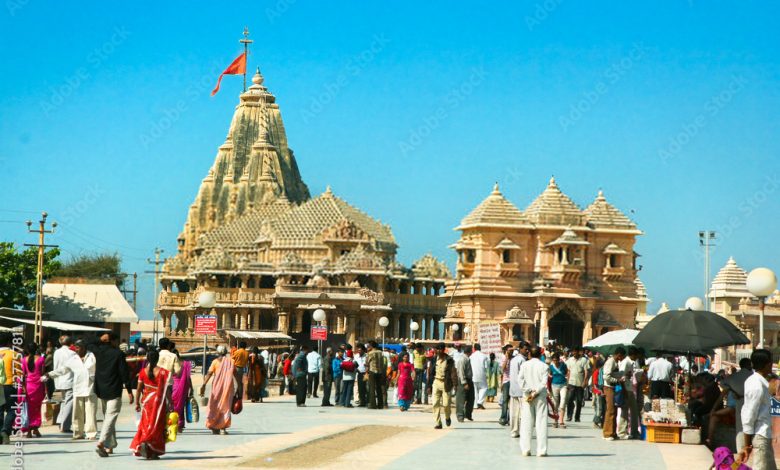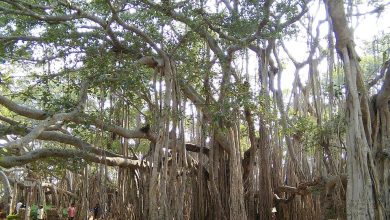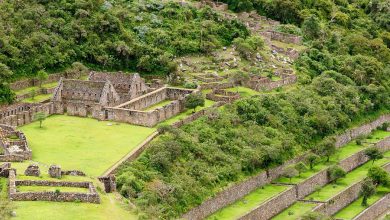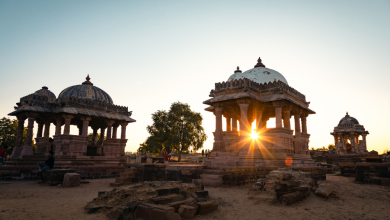Somnath Temple – The First Jyotirlinga

Somnath Temple in Gujarat
Somnath is the first amongst the holy shrines and traditionally, the Dwadash Jyotirlinga pilgrimage begins with the Somnath Temple. It is the prime abode of Lord Shiva and considers to be the holiest of all the Jyotirlingas. The temple destroys and rebuilt six times, is held in reverence throughout India, and is rich in legend, tradition, and history. It locates at Prabhas Patan (Somnath – Veraval) in Saurashtra in Gujarat.
Somnath Temple Jyotirlinga situate at Somnath Patan (the south coast of Saurashtra), near Veraval in (Prabhas Kshetra) Kathaiwad district in Gujarat. Somnath considers to be the first of the 12 Jyotirlingas of Shiva and is a revered pilgrimage center in India
Legend of Somnath Temple
Skanda Purana, in a chapter on Prabhasa Khanda, describes the emergence of this Jyotirlinga. Legend goes that the moon was married to the 27 daughters of Daksha Prajapati. Amongst all his wives, he had a special love for Rohini and neglected the others.
Seeing the negligence of Chandra towards his other wives, Prajapati Daksha cursed Chandra that he would lose his beauty and radiance. But because of a moon devoid of radiance and beauty, the entire world became lifeless. A disturbed Chandra, came down to Prabhasa with Rohini and worshipped the Sparsa Linga of Somnath after which he was blessed by Shiva to grow and shine in the bright half.
As the moon regained its light here, this town came to be known as Prabhasa. Brahma, one of the trinity, installed the Brahmashila, and paved the way for the construction of the temple. On the request of the Chandrama and other gods, Bhagwan Shankar assumed the name Somchandra (Jyotirlinga) and resided there eternally. He became famous by the name Somnath in the three worlds. Since it was the Prabhas Kshetra where Bhagwan Shri Krishna performed all his Lilas. In this temple there is a small cave in which a lamp burns continuously.
The Skanda Purana describes the Sparsa Linga of Somnath as one bright as the sun, the size of an egg, lodged underground. The Mahabharata also refers to the Prabhasa Kshetra and the legend of the moon worshipping Shiva.
trimbakeshwar and Mahakaleshwar are the nearest jyotirlinga of Somnath jyotirlinga
Architecture of Somnath Mahadev Temple
Though built in the Kailas Mahameru Prasad style, the Somnath Temple’s architecture influences that of Jain style. The temple consists of Garbhagruh, Sabhamandap and Nrityamandap with 150 feet (ca. 46 m) high Shikhar and a Kalash at its top. The dome of the temple is the biggest one.
The Somanath temple faces east and has a vast central hall with three entrances, each protected by a tall porch. Added attractions are the carved doorways, the sculptured representations of Nandi (the celestial bull) and the figures of goddesses.
In the balconied corridor is the damaged form of Nataraja statue. Shri Kapardi Vinayak and Shri Hanuman Temple are other spots to note in the temple. This temple says to be the place where Lord Krishna performs all his Lilas. There is a small cave in the temple where a lamp burns continuously.
Ransacking and Rebuilding of Somnath Jyotirlinga
Somnath Jyotirling has been destroying and rebuilt a number of times in history:
* Accounts of glory and wealth of Somnath by the Arab traveler Al Biruni prompted a visit by Mahmud of Ghazini who ransacked and destroyed the temple in 1025 CE. It immediately rebuilds by King Bhima of Gujarat and King Bhoja of Malwa.
* Somnath temple destroy again by Alaf Khan, the general of Allauddin Khilji in 1300 CE. It rebuild again by King Mahipala of the Chudasama dynasty.
* Somnath shrine destroy yet again in 1390, 1490, 1530 and finally in 1701 by Aurangazeb. It rebuild with perseverance each time after it was destroyed.
Destruction of Somnath temple
About the time the general order for destruction of Hindu Temples issue (9th April 1669), the highly venerated Temple of Somanath built on the seashore in Kathaiwad also destroy.
The famous Temple dedicates to Lord Shiva. In the 11th century, the Temple loot and destroy by Mahmud Ghaznavi. It rebuilds by King Bhim Deva Solanki of Gujarat and was again renovate by Kumarapal in 1143-44 A.D.
The Temple destroys again by Alauddin Khalji’s troops in 1299. In a rare description of the scene of a Temple destruction, like of which continued to occur time and again during the long and disastrous rule of the Musalman rulers in India, we have the following account. “The Mlechchha (asura) stone breakers”, writes Padmanabha in his classic work, “climbed up the shikhar of the Temple and began to rain blows on the stone idols on all three sides by their hammers, the stone pieces falling all around.
They loosened every joint of the Temple building and then began to break the different layers (thara) and the sculptured elephants and horses carved on them by incessant blows of their hammers.
Then, amidst the loud and vulgar clamor, they began to apply force from both the sides to uproot the massive idol by means of wooden beams and iron crowbars” (Kanhadade Prabandha, Canto I, vss. 94-96).
After the destruction of Somnath Temple during Alauddin’s time, it rebuilds again. When Aurangzeb gave orders for its destruction, the scene must have been a little different from the one describe by Padmanabha. The artist in the painting above tries to recreate the scene.





